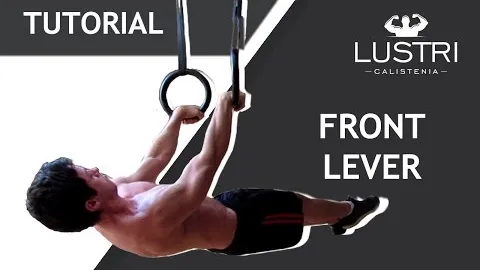
The front lever is a challenging and impressive exercise that targets the muscles of the upper body, particularly the back, shoulders, and core. It requires a high level of strength, stability, and body control. In this article, we'll explore the key aspects of the front lever exercise, including its benefits, proper technique, and variations.
Incorporating the front lever into your workout routine can offer a wide range of benefits. Some of the main advantages of this exercise include:
The front lever primarily targets the muscles of the back, shoulders, and arms. By engaging these muscles in a dynamic and challenging manner, the exercise helps to build upper body strength and muscular endurance.
To perform the front lever properly, you need to engage your core muscles to maintain a horizontal position. This exercise is highly effective in developing core stability and strength, which is essential for overall body control and improved performance in other activities.
Mastering the front lever requires fine-tuned body control and coordination. By consistently practicing and progressing with this exercise, you can enhance your ability to control your body's movements and maintain stability in various positions.
The front lever targets the muscles responsible for good posture, such as the erector spinae and rhomboids. Regularly incorporating this exercise into your routine can help correct postural imbalances, leading to improved posture and reduced risk of injury.
To perform the front lever exercise correctly, follow these steps:
It's important to note that the front lever is an advanced exercise and may take time to progress to full mastery. Beginners should focus on building foundational strength through exercises such as pull-ups, rows, and planks before attempting the front lever.
Once you have achieved proficiency in the standard front lever, you can explore different variations to further challenge yourself and continue your progress. Some popular front lever variations include:
Extend one arm forward while performing the front lever to increase the difficulty level. This variation requires even more core strength and stability.
Instead of keeping your legs together, spread them apart to form a "V" shape. This variation engages different muscles and places increased demands on your core.
Rather than holding a fully horizontal position, lower your body until it is at a 45-degree angle. This variation allows you to gradually work towards the full front lever while building strength.
The front lever is an advanced exercise that offers numerous benefits, including upper body strength, core stability, improved body control, and posture correction. By following the proper technique and progressing through different variations, you can continuously challenge yourself and reap the rewards of this challenging exercise. Remember to prioritize safety and proper form, and seek guidance from a qualified fitness professional if needed.
If you're looking for a gym, fitness club or yoga studio, you've come to the right place.
You can find information about gyms in your area. Browse catalog of gyms and find gyms with classes which are you looking for.
On gym page you can find simple information like address, phone or website. You can find list of available classes. You can check availability of personal training or small group classes. On place page you can also see information about open hours.
You can find gyms near you with amenities, courts, studios and equipments.
Use our map to find gym at your city or district.
In Gym Navigator you can find list of exercises with movies for many body parts.
You can browse exercises catalog and find exercises the best of you.
You can also find exercises grouped into workout plans, which you can use to improve you body. Each routine show you exercises one by one and give you possibility to count you progress and count down rest time.